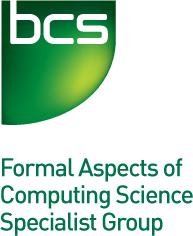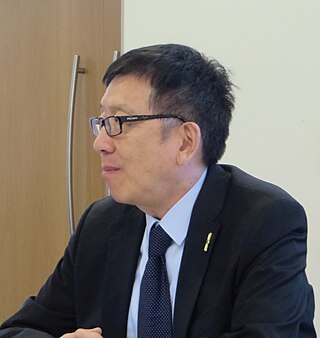Related Research Articles

Niklaus Emil Wirth was a Swiss computer scientist. He designed several programming languages, including Pascal, and pioneered several classic topics in software engineering. In 1984, he won the Turing Award, generally recognized as the highest distinction in computer science, "for developing a sequence of innovative computer languages".

The Z notation is a formal specification language used for describing and modelling computing systems. It is targeted at the clear specification of computer programs and computer-based systems in general.

Sir Charles Antony Richard Hoare is a British computer scientist who has made foundational contributions to programming languages, algorithms, operating systems, formal verification, and concurrent computing. His work earned him the Turing Award, usually regarded as the highest distinction in computer science, in 1980.
In computer science, formal methods are mathematically rigorous techniques for the specification, development, analysis, and verification of software and hardware systems. The use of formal methods for software and hardware design is motivated by the expectation that, as in other engineering disciplines, performing appropriate mathematical analysis can contribute to the reliability and robustness of a design.

Bertrand Meyer is a French academic, author, and consultant in the field of computer languages. He created the Eiffel programming language and the idea of design by contract.

Joseph Amadee Goguen was an American computer scientist. He was professor of Computer Science at the University of California and University of Oxford, and held research positions at IBM and SRI International.
The B method is a method of software development based on B, a tool-supported formal method based on an abstract machine notation, used in the development of computer software.

Clifford "Cliff" B. Jones is a British computer scientist, specializing in research into formal methods. He undertook a late DPhil at the Oxford University Computing Laboratory under Tony Hoare, awarded in 1981. Jones' thesis proposed an extension to Hoare logic for handling concurrent programs, rely/guarantee.

Professor Dines Bjørner is a Danish computer scientist.
In computer science, an abstract state machine (ASM) is a state machine operating on states that are arbitrary data structures.

BCS-FACS is the BCS Formal Aspects of Computing Science Specialist Group.

Egon Börger is a German-born computer scientist based in Italy.

He Jifeng is a Chinese computer scientist.
Kevin C. Lano is a British computer scientist.

Michael J. Butler is an Irish computer scientist. As of 2022, he is professor of computer science and Dean of the Faculty of Engineering and Physical Sciences at the University of Southampton, England.

Zhiming Liu is a computer scientist. He studied mathematics in Luoyang, Henan in China and obtained his first degree in 1982. He holds a master's degree in Computer Science from the Institute of Software of the Chinese Academy of Sciences (1988), and a PhD degree from the University of Warwick (1991). His PhD thesis was on Fault-Tolerant Programming by Transformations.

Professor Martin C. Henson FBCS FRSA is an English computer scientist based at the University of Essex. He is dean for international affairs and is affiliated to the School of Computer Science & Electronic Engineering. Henson was head of the department of computer science from 2000 to 2006.
Charles Carroll Morgan is an American computer scientist who moved to Australia in his early teens. He completed his education there, including a Doctor of Philosophy (Ph.D.) degree from the University of Sydney, and then moved to the United Kingdom in the early 1980s. In 2000, he returned to Australia.
The Rodin tool is a software tool for formal modelling in Event-B. It was developed as part of several collaborative European Union projects, including initially the RODIN project (2004–2007).
Casimier Joseph Franciscus "Cas" Cremers is a computer scientist and a faculty member at the CISPA Helmholtz Center for Information Security in Saarbruecken, Germany.
References
- ↑ Bowen, Jonathan P.; Liu, Zhiming; Zhang, Zili (2019-04-17). Engineering Trustworthy Software Systems: 4th International School, SETSS 2018, Chongqing, China, April 7–12, 2018, Tutorial Lectures. Springer. ISBN 978-3-030-17601-3.
- ↑ "Jean-Raymond Abrial". DBLP . Retrieved 2020-12-25.
- ↑ Jean-Raymond Abrial (1974). "Data Semantics". IFIP Working Conference Data Base Management.
- ↑ Jones, Cliff; Roscoe, Bill (2010). Insight, inspiration and collaboration (PDF). Oxford University Department of Computer Science. Bibcode:2010rwch.book....1J . Retrieved 28 September 2023.
- ↑ Jean-Raymond Abrial (1996). The B-Book: Assigning Programs to Meanings. Cambridge: Cambridge University Press. ISBN 0-521-49619-5.
- 1 2 "Academy of Europe: Abrial Jean-Raymond". www.ae-info.org. Retrieved 2020-05-17.
- ↑ Abrial, Jean-Raymond (22 August 2005). "Managing the Construction of Large Computerized Systems". Department of Computer Science, ETH Zurich, Switzerland. Archived from the original on 26 September 2011. Retrieved September 26, 2011.